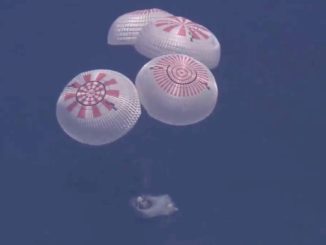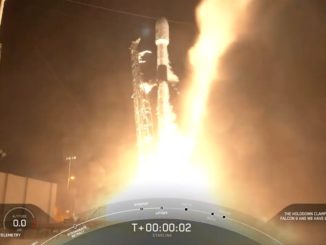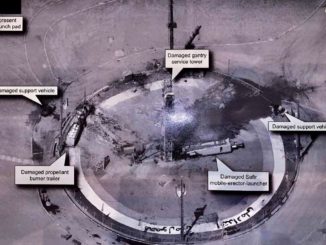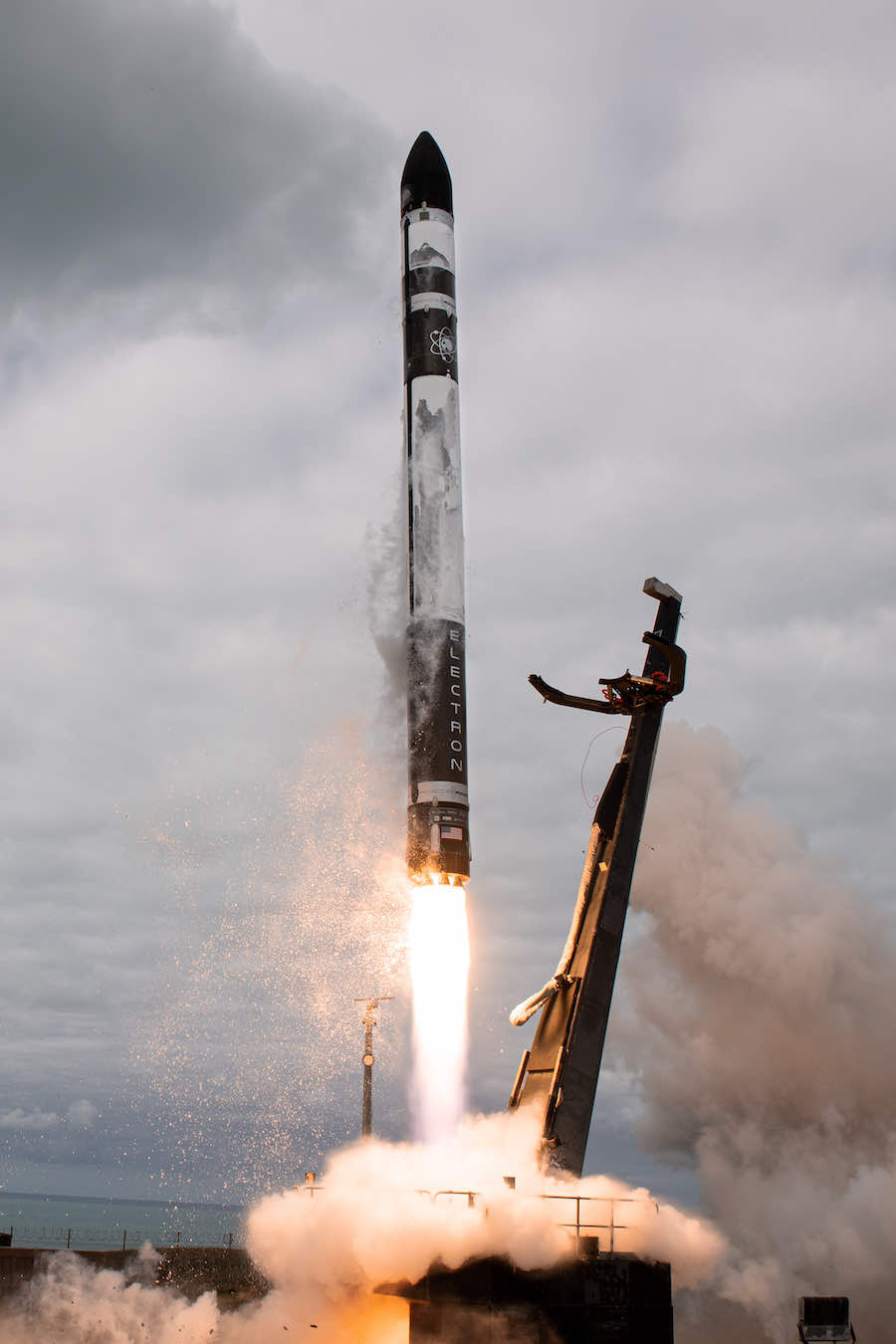
Rocket Lab launched seven satellites Monday from New Zealand on a rideshare mission serving the U.S. and Australian militaries and space services startups. A spacecraft developed in-house by Rocket Lab was also aboard to prove out technologies for a NASA moon mission launching later this year.
A carbon-composite Electron launcher, fed by kerosene and liquid oxygen propellants, fired off Rocket Lab’s privately-owned launch pad on the North Island of New Zealand at 6:30 p.m. EDT (2230 GMT) Monday.
The nearly 60-foot-tall (18-meter) rocket climbed through a cloud deck over the launch base in New Zealand, where liftoff occurred at 11:30 a.m. local time Tuesday.
Nine Rutherford engines on the Electron’s first stage fired for about two-and-a-half minutes before the booster jettisoned to fall into the Pacific Ocean east of the launch site. A single Rutherford engine on the Electron’s second stage propelled the rocket into a preliminary transfer orbit before separation of a kick stage to perform the final orbital placements for the payloads.
The kick stage’s Curie engine ignited around 49 minutes after liftoff to reach a planned 341-mile-high (550-kilometer) orbit inclined 45 degrees to the equator, the destination for five of the seven satellites aboard the mission. The kick stage then deployed the five CubeSat payloads before reigniting for two more burns to lower its altitude to around 279 miles (450 kilometers).
Once in that orbit, the mission’s largest payload — an optical Earth observation satellite for a Seattle-based company called BlackSky — separated from the kick stage. Rocket Lab then planned to transition the kick stage into an extended mission mode, using solar arrays to generate electricity for several months of its own technology demonstrations focused on proving out spacecraft systems for NASA’s CAPSTONE small satellite mission launching to the moon later this year.
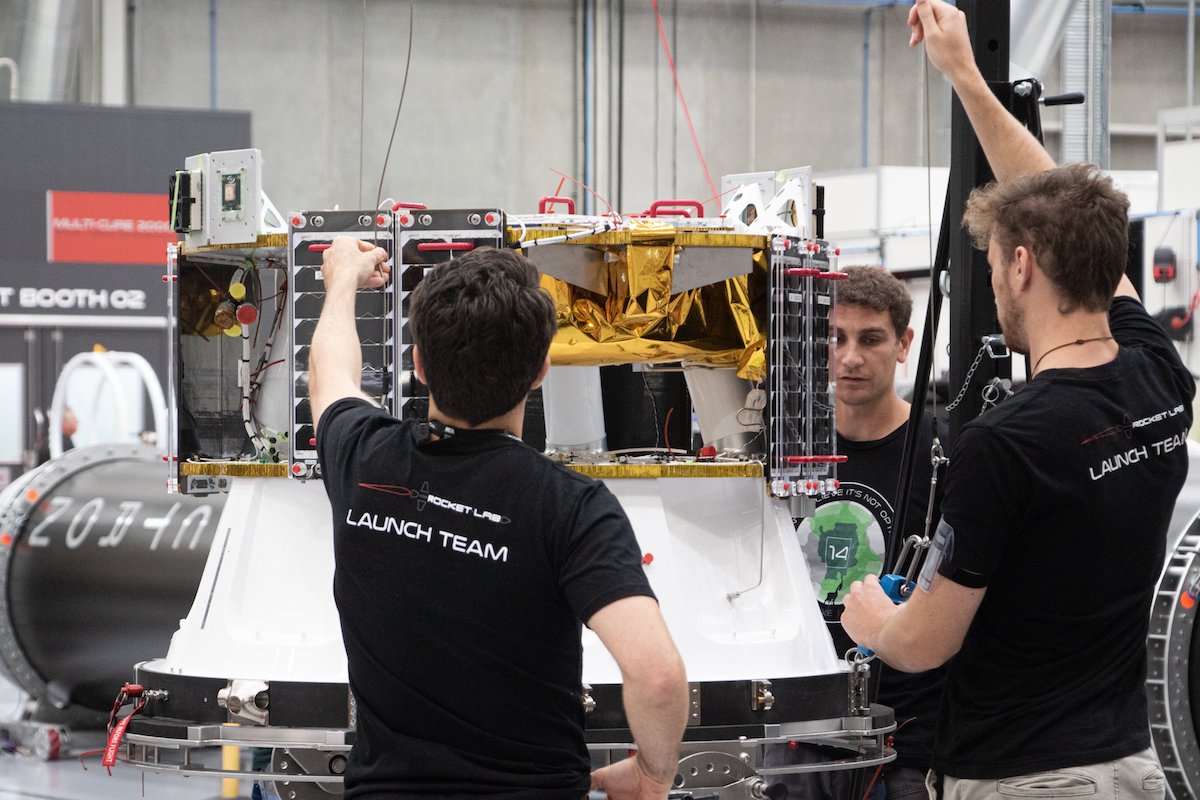
Rocket Lab, headquartered in Long Beach, California, declared the mission a success in a post-launch press release. The mission was Rocket Lab’s second launch of 2021, and the company’s 19th Electron launch since 2017. The satellites on Monday’s mission pushed Rocket Lab over 100 satellites launched to date.
“Congratulations and welcome to orbit for all of our customers on Electron,” said Peter Beck, Rocket Lab’s founder and CEO. “Reaching more than 100 satellites deployed is an incredible achievement for our team and I’m proud of their tireless efforts which have made Electron the second most frequently launched U.S. rocket annually.
“Today’s mission was a flawless demonstration of how Electron has changed the way space is accessed,” Beck said in a statement. “Not only did we deploy six customer satellites, but we also deployed our own pathfinding spacecraft to orbit in preparation for our moon mission later this year.”
BlackSky’s new satellite is the seventh spacecraft in the company’s growing constellation of Earth observation platforms. Built by LeoStella, a joint venture between Thales Alenia Space and Spaceflight Industries, the new satellite weighs around 121 pounds, or 55 kilograms.
BlackSky has now launched seven Earth-imaging microsatellites since 2018 — one on an Indian rocket, three on SpaceX Falcon 9 rockets, and three with Rocket Lab. The company confirmed Monday night its ground team established contact with the BlackSky 7 spacecraft after launch.
Each of the current generation of BlackSky spacecraft can capture up to 1,000 color images per day, with a resolution of about 3 feet (1 meter), from orbits around 280 miles (450 kilometers) above Earth.
BlackSky is building a constellation of 16 to 24 microsatellites to collect high-resolution imagery for sale to commercial and government customers, including the U.S. military.
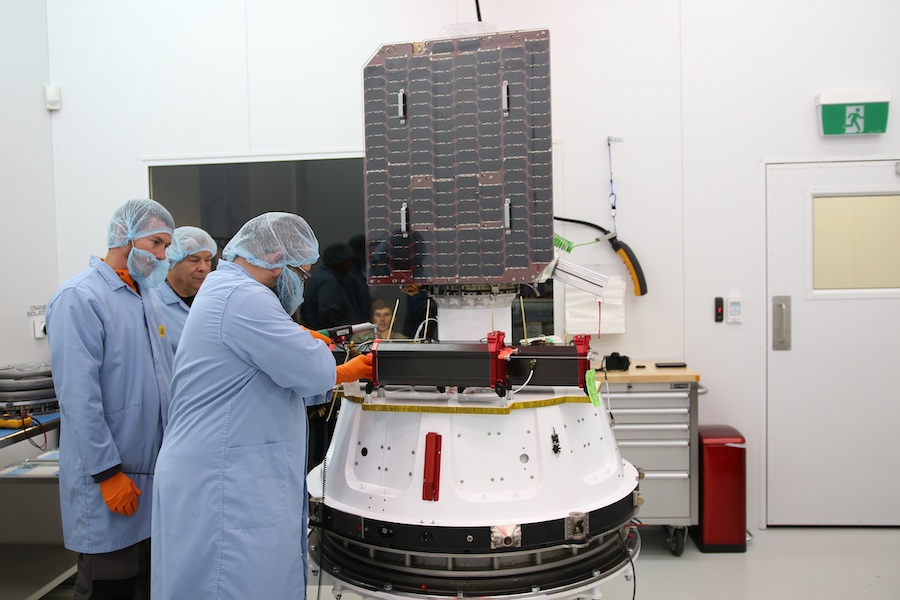
Other satellites on-board this mission — which Rocket Lab has nicknamed “They Go Up So Fast” — included two CubeSats built by Tyvak, a small satellite manufacturer in Southern California.
Tyvak built one of the briefcase-size satellites — Centauri 3 — for Fleet Space Technologies, an Australian company that is planning a network of 140 small satellites to provide data relay and tracking services to the energy, utilities, and mining industries.
The other Tyvak-built spacecraft on Monday’s mission is named Myriota 7 for the Australian company Myriota, which is planning its own network of small data relay satellites.
There was also a small satellite mission developed by researchers at the University of New South Wales’s campus in Canberra, Australia. The M2 spacecraft, which will split into two separate smallsats once in orbit, is managed in collaboration with the Royal Australian Air Force.
The two M2 satellites will fly in formation, and is “one of the most complex CubeSat programs ever attempted,” said Russell Boyce, director of UNSW Canberra Space, a research and development unit at the university.
The satellites were almost entirely built in Australia, with optical telescopes supplied by a company in the United States.
“Supporting Australia’s space situational awareness, the data captured by M2 can inform maritime surveillance, weather observations and low-orbit satellite traffic,” officials wrote in a press release about the M2 spacecraft. “This information is processed through advanced in-orbit artificial intelligence, on a platform reconfigurable throughout the mission.”
“As we depend on space infrastructure for resource management, secure communications and data collection during extreme weather events and bushfires, building our sovereign space capabilities is critical for Australian security,” Boyce said.
“The two satellites will be able to communicate with each other, as well as ground stations back here on Earth, giving better quality data, with greater detail and less lag time – all fundamentally important for Australia’s defense,” said Air Vice-Marshal Cath Roberts, Head of Air Force Capability. “This innovative home-grown approach has been designed to meet Australia’s unique requirements for sovereign space capability.”
A small satellite for the U.S. Army’s Space and Missile Defense Command also launched Monday. The Gunsmoke-J satellite is the latest in a series of nanosatellites to “demonstrate advanced information collection in direct support of the Army combat operations,” the service says on its website.
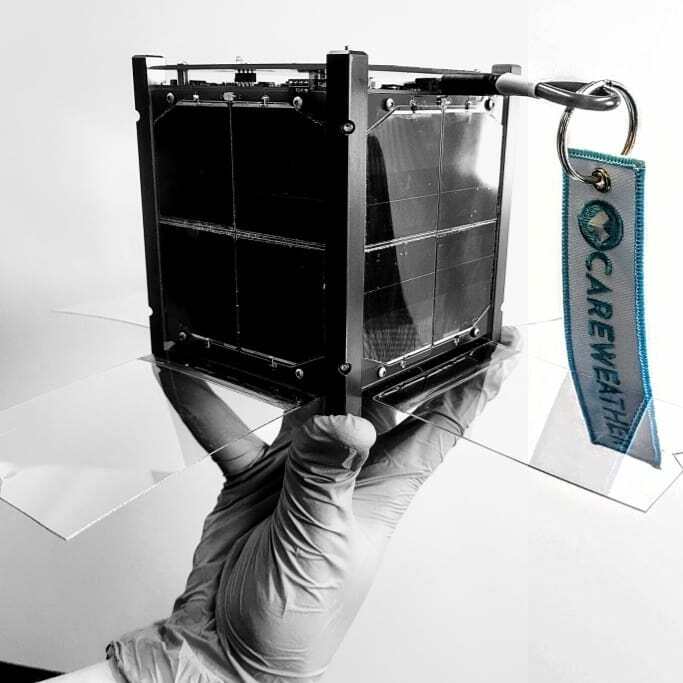
The smallest CubeSat on Monday’s missions is the first satellite for a commercial weather startup in Utah named Care Weather Technologies. The “Veery Hatchling” spacecraft is a 1U CubeSat — a bit larger than a Rubik’s cube — that could pave the way for a fleet of nanosatellites providing wind measurements over the world’s oceans, a key input to weather forecast models. Care Weather Technologies says it built the spacecraft in just three months.
The kick stage on the Electron rocket launched Monday doubles as its own satellite.
The Pathstone mission will test an upgraded version of Rocket Lab’s Photon spacecraft design, which itself is derived from the Electron rocket’s kick stage, for NASA’s CAPSTONE mission scheduled for launch later this year. CAPSTONE will collect data on the radiation environment around the moon in the same type of orbit that NASA’s planned Gateway space station will use later in the 2020s. It’s a precursor mission for NASA’s Artemis moon program.
According to Rocket Lab, Pathstone is the company’s second Photon spacecraft to launch after debuting the satellite platform in August 2020. The new Photon variant is designed for missions to the moon and beyond.
“This Photon will build up flight heritage by demonstrating a new avionics stack, software, radio, sensors, actuators, custom solar panels, and more,” Rocket Lab says. “With in-house manufactured reaction wheels and a control system representative of what we’ll use for CAPSTONE, Photon Pathstone will demonstrate the precision pointing required for this mission’s multiple Hyper Curie (engine) burns. Photon Pathstone’s new radio will also showcase how we’ll communicate with the spacecraft at lunar distances and provide valuable ranging data.”
NASA selected Rocket Lab to launch the CAPSTONE mission from the company’s new launch facility at Wallops Island, Virginia.
Rocket Lab did not attempt to recover the Electron’s first stage on Monday’s mission. Beck said Monday that Rocket Lab’s next booster recovery is scheduled later this year on one of the company’s upcoming launches.
The rocket assigned to the next booster recovery features an upgraded heat shield to better withstand the extreme conditions atmospheric re-entry, Beck said.
Rocket Lab recovered an Electron booster for the first time last year, when a rocket stage successfully parachuted intact into the Pacific Ocean downrange from the New Zealand coast. Eventually, Rocket Lab wants use a helicopter to catch the boosters as they descend under a parachute, then refurbish the rockets and reuse them.
Email the author.
Follow Stephen Clark on Twitter: @StephenClark1.

